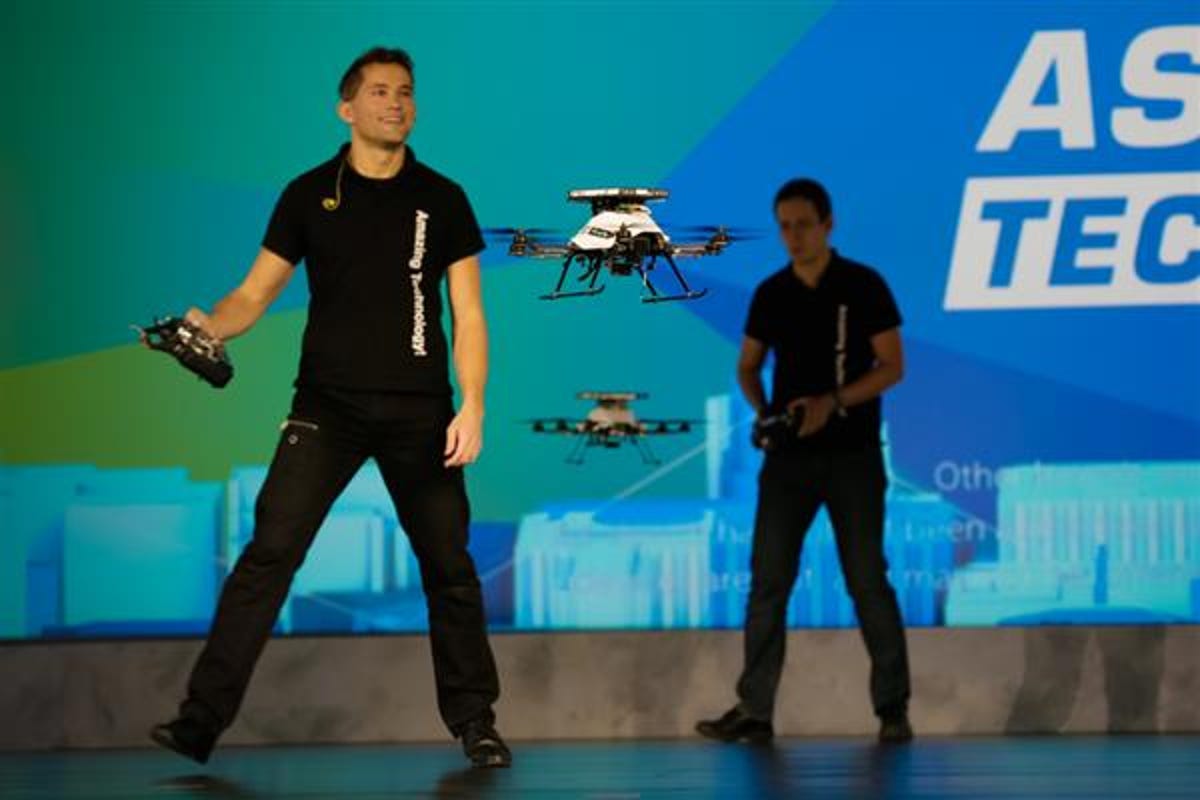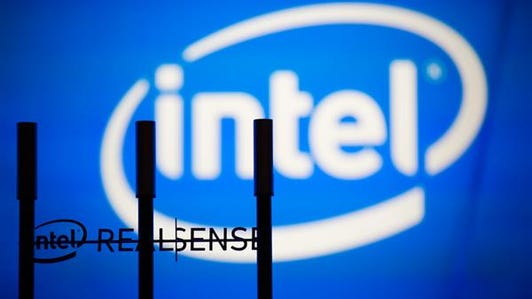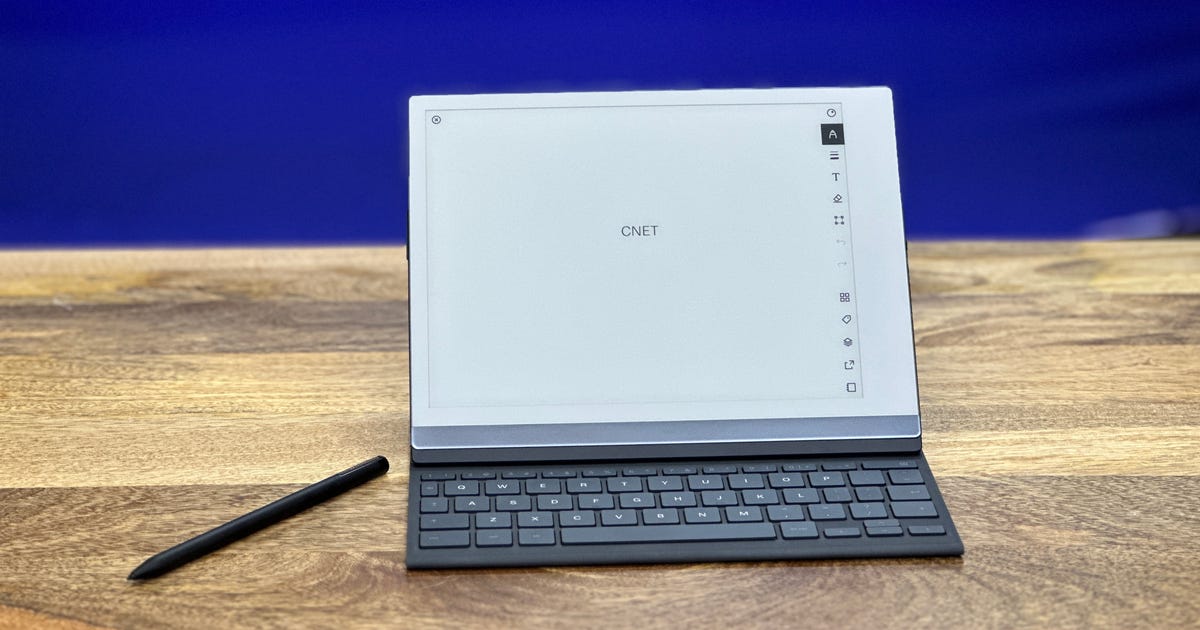
James Martin/CNET
LAS VEGAS — You’ve spent years — decades — typing on a keyboard and dragging your mouse around to control your computer. Intel wants to radically shake that all up.
Intel CEO Brian Krzanich on Tuesday offered a glimpse into the company’s vision of the near future with demonstrations of cutting-edge technologies, including gesture controls, facial recognition security prompts, drones that know how to move around obstacles and a jacket that can help the visually impaired sense what’s around them.


Claire Reilly/CNET
At the heart of many of the demonstrations during his keynote at the Consumer Electronics Show was Intel’s RealSense 3D, the company’s depth-sensing camera technology. Intel is banking heavily on the future of RealSense. If successful, it could mean a radical change in how we interact with computers.
Intel also made another push for wearables with Curie, a button-sized chip that’s powerful yet small enough to be placed on a jacket, ring or any number of wearable designs. The company is moving quickly into the wearables arena after missing out on the smartphone market.
“2015 is truly a unique year,” Krzanich said. “It’s the beginning of the next consumer technology wave.”
Bringing new sight
Krzanich’s keynote was more of a vignette of demonstrations showing off the capabilities of RealSense camera. It started with a simple example, as an Intel employee showed off gesture and voice controls that played and paused a YouTube video, scrolled down the screen and set a timer on a Lenovo Yoga laptop.
Seven of Intel’s partners, including Lenovo and Hewlett-Packard, will launch devices equipped with RealSense, Krzanich said. A working example of RealSense is in Dell’s Venue 8 7000 tablet.
Intel keynote at CES 2015: 3D printing, drones and selfies (photos)






In another example, a camera mounted in the front of a mock home recognized a person’s face to unlock the door, a feature Intel coined “True Key.”
Krzanich referenced the movies “Minority Report” and “Iron Man” when talking about the 3D hologram displays, and an engineer showed off playing piano by tapping on a floating holographic display of a keyboard.


James Martin/CNET
“We haven’t put it in a product yet, but it’s an example of where the future is headed,” he said.
Things got even more interesting when the RealSense technology was applied to drones and robots. A drone with six mounted RealSense cameras would be able to get a full 360-degree view of its surrounding area, essentially giving it the ability to see. Both a drone and an Ava 500 — a video collaboration robot — were sent through small obstacle courses and automatically knew to detect and avoid obstructions.
Finally, Intel embedded RealSense cameras into a special jacket intended for the blind or visually impaired. The cameras “see” the surroundings and offer vibration alerts to give the person context. Krzanich said that he would open up the jacket’s technology for anyone to develop upon.
Small, but powerful
Krzanich also introduced Curie, a button-size chip that includes a processor, Bluetooth low-energy radio, sensors and a dedicated engine to determine different sporting activity. It’s also able to run for extended periods with a coin-size battery, or can be recharged.


James Martin/CNET
Such a minuscule chip could power wearables of different designs, from rings to pendants to clothes. “This changes the game of wearables,” he said.
Intel is eager to make its mark in the burgeoning arena of wearables. The company was late to the game with smartphones, and continues to spend billions of dollars chasing that market. It is hoping to avoid the same mistake with wearable technology.
Intel brought out new partner Oakley and its CEO, Colin Baden, who talked about the opportunities that come from integrating Curie into eyewear.
It previously partnered with Luxottica, watchmaker Fossil and design house Opening Ceremony. In September, it unveiled Mica, a smart bracelet that costs under $1,000.
“We’re working with partners to make exciting new products,” he said.
All the cool new gadgets at CES 2015 (pictures)










